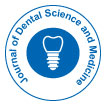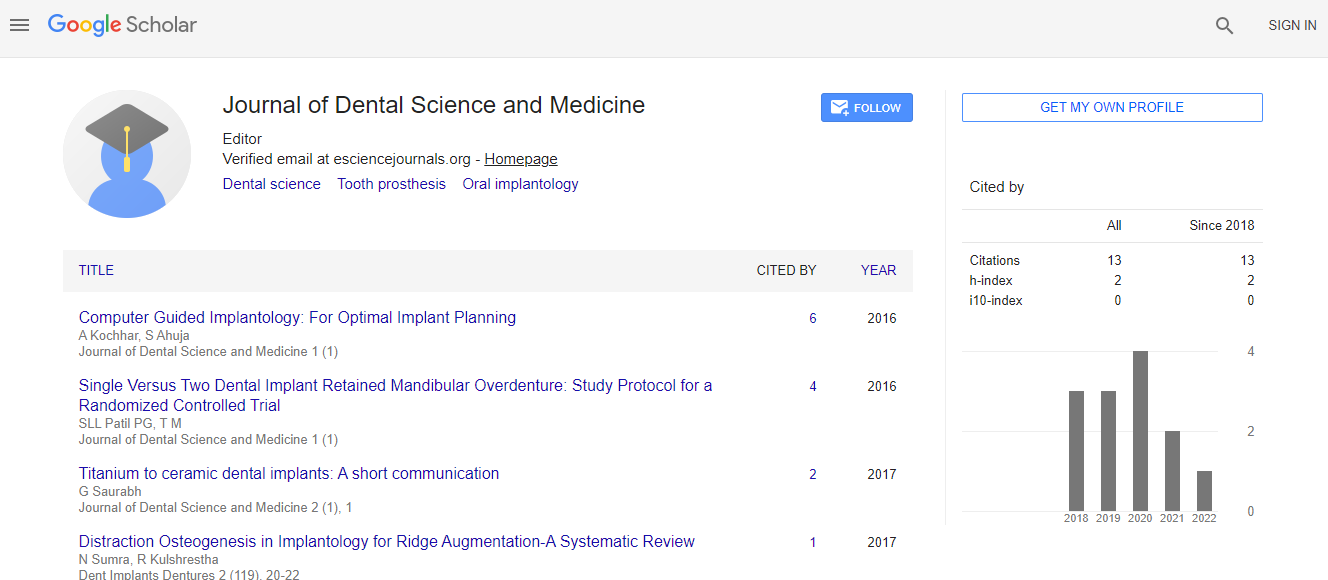Our Group organises 3000+ Global Conferenceseries Events every year across USA, Europe & Asia with support from 1000 more scientific Societies and Publishes 700+ Open Access Journals which contains over 50000 eminent personalities, reputed scientists as editorial board members.
Open Access Journals gaining more Readers and Citations
700 Journals and 15,000,000 Readers Each Journal is getting 25,000+ Readers
Google Scholar citation report
Citations : 13
Journal of Dental Science and Medicine received 13 citations as per Google Scholar report
Indexed In
- RefSeek
- Hamdard University
- EBSCO A-Z
- ICMJE
Useful Links
Recommended Journals
Related Subjects
Share This Page
Endodontic surgery with bone replacement
28th International Conference on Dental Research & Future Dentistry
Prof. Gurien demiraqi
OMF Surgeon, Owner, Tirana, Albania
Keynote: J Dent Sci Med
Abstract
Abstract: Purpose: Patients are everyday more demanding, trying to save their teeth for as long as possible. This brings many times the need for surgery. They obviously would prefer to solve in less surgery sessions possible. In most cases, the hard and soft tissues around the teeth change significantly with infection, aging and various factors. Often, different graft materials are required to be placed to maintain the volume of hard and soft tissue and thus maintain these teeth in time. Method: Endodontic retreatment is always a good choice when possible. CBCT is always used to assess presurgical situation and program an optimal surgical treatment. Latest CBCT and CAD-CAM technologies allow a very realistic presurgical programing if guided surgery is chosen. Piezo technologies allow precise spacing and expansion of alveolar ridge or autologous bone grafts. Laser also allows better cleaning of infected area as before. The ideal material for hard tissue grafting is osteoconductive, osteoinductive and osteogenic. That is why autologous bone graft is considered to be the "golden standard" reference graft. Several systems to collect autologous bone are used. Bone Scrapers allows the collection of cortical bone easily. Unica allows bone collection in the implanted alveolus we are creating or in the distance. Extracted teeth provide a valid substitute to autologous bone. Recent generations of biomaterials allow for a good supply of the required amount, which cannot be autologously collected. Venous Blood collection Systems such as BCGF allows the formation of fibrin membranes for their coverage and also the liquid fibrin that compacts bone particles in â�?�?Sticky Boneâ�? and â�?�?Sticky Toothâ�? �?®. Several materials were also used in retrograde filling of the apical area. Results: We used the autologous teeth grinding system, Smart Dentine Grinder, BCGF, Safe Scraper, Unica, Piezo, laser, CAD-CAM, CBCT and various biomaterials of the latest generation, in various procedures involving enhancement and improvement of teeth defect in apical and lateral area during endodontic surgery with several mini-invasive techniques. Conclusions: The use of autologous, bone and tooth grafts, whenever possible presents a procedure not always easy to apply. The procedure for soft and hard tissue graft preparation is not always simple and often requires time to acquire and so does the technical skills needed. Better start a surgery after trying retreatment as an option whenever possible. New concepts in the preprograming and guided surgery strongly influence the long-term success. Grafting with suitable materials is in many cases improving the outcome even in small defects and a must in big ones.Biography
Gurien Demiraqi Graduated in dentistry in the Faculty of Dentistry, Tirana University in 2003. From 2003-2006 he specialized in Oral surgery and Implantology with DDS, BwKh Berlin (University hospital of Charite) and OMF Surgery, BwKh Amberg (University hospital of Friedrich-Alexander Universität Erlangen-Nürnberg) Germany, BwzKh Koblenz (University hospital of Johannes Gutenberg University- Mainz) Germany.

 Spanish
Spanish  Chinese
Chinese  Russian
Russian  German
German  French
French  Japanese
Japanese  Portuguese
Portuguese  Hindi
Hindi 